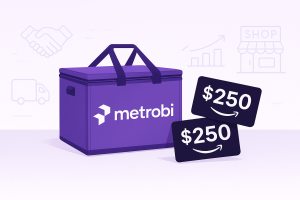Most businesses don’t fail because their products aren’t good or their teams aren’t smart. The real challenge is staying successful over the long haul. In 2025, nearly half of businesses will lose market share to competitors who figured out how to build a sustainable competitive advantage, something that keeps them strong and ahead, even as the market changes.
Your business needs more than just temporary wins. It needs a position in the market that competitors can’t easily copy – even when they try their hardest. This competitive position is what we call a sustainable competitive advantage.
Think about companies like Apple or Toyota. They didn’t become industry leaders by accident. They built systems, processes, and brand values that others struggle to match. Their success comes from carefully planned sustainable competitive strategies that compound over time.
But here’s what’s interesting: Creating a sustainable competitive advantage isn’t reserved for giant corporations. Small and medium businesses can build lasting market positions too. The key is understanding how to identify your unique strengths and turn them into long-term business assets.
In this analysis, we’ll examine proven methods to build and maintain sustainable competitive advantages in niche market. We’ll look at real examples from successful companies, break down their strategies, and show you practical steps to apply these lessons to your business.
Lower your delivery costs by 23%
How we reduce costs:
- No delivery vehicle expenses
- Optimized local routes
- Pay-per-delivery model
- Average 23% delivery cost reduction
What is a Sustainable Competitive Advantage?
Outshines competitors over the long haul.
Built on uniqueness, strong customer ties, and wise use of resources.
Keeps businesses relevant and profitable.
Examples of Sustainable Competitive Advantage
Businesses like Apple and Coca-Cola are often cited. Apple’s innovation in technology and Coca-Cola’s branding are hard for competitors to copy. Amazon’s focus on exceptional customer experience and satisfaction ensures a strong market position too. Such companies have long-lasting market positions due to unique features and robust customer connections.
Real-world examples could also include small businesses with strong local followings. They win through community ties and personalized services. Consistent positive experiences lead to customer and brand loyalty. These successes highlight the main pillars of sustainable competitive advantage.
Types of Sustainable Competitive Advantage
Competitive advantage often takes the form of either cost leadership or differentiation. Cost leadership is about keeping production costs low to offer cheaper prices. Differentiation, on the other hand, focuses on making unique products or services.
Cost Leadership offers benefits like increased market share achieve cost leadership and protection in price wars. It’s effective when you have economies of scale. Walmart uses this with its efficient supply chain.
Differentiation involves creating distinct services or products. Think of Tesla with its electric cars. Strong branding helps too. Apple has commanded premium pricing power through its brand reputation.
Cost Leadership
Efficient production and economies of scale lie at the heart of cost leadership. Businesses like Walmart use streamlined operations and supply chain management to reduce costs. This approach allows offering products at lower prices than competitors while maintaining profit margins.
Cost leadership attracts price-sensitive customers and can protect against market downturns. However, it requires constant cost monitoring and improvements to maintain the edge of the lowest cost ever. Mismanaging costs can erase the competitive advantage quickly.
Differentiation in Sustainable Competitive Advantage
Focusing on unique products or services defines differentiation. Effective branding plays a critical role here. Apple, for instance, blends cutting-edge technology with sleek design to stand out. They create a narrative that consumers connect with emotionally and intellectually.
By emphasizing uniqueness, businesses can justify higher prices. Differentiation can also lead to customer loyalty. However, it’s imperative to continually innovate and adapt to changing tastes focused market itself. Failure to do so can lose market position quickly.
How to Make a Competitive Advantage Sustainable?
Resource allocation and differentiation.
Ongoing reviews and adaptation strategies.
Simplify complex processes for robust competitiveness.
Strategic Resource Allocation
Strategic resource allocation ensures your business goals align with resources for optimal impact. Focus on high-impact projects that align with long-term objectives, ensuring resources foster growth and efficiency. Prioritizing these projects not only enhances growth but can also boost efficiency in sustainable competitive advantages. Case studies show how organizations that allocate resources wisely complete projects ahead of schedule and reduce delays.
Unique Value Proposition Strategies
A clear and distinct value proposition helps set you apart in the narrow market segment. Building this differentiation allows businesses to offer more than just products—it’s about emphasizing what makes your offerings distinct.
Developing a unique value proposition involves knowing your target market and competition, then focusing on what makes you stand out. This could be superior service, exclusive technology, or innovative designs. Businesses like Apple excel by highlighting unique benefits over competitors, thus sustaining their market position through value-based differentiation.
Continuous Improvement Processes in Sustainable Competitive Advantage
Being adaptable is essential. Businesses need to embrace constant review and improvement cycles to respond to market changes. Implementing a cycle of evaluation helps your business remain relevant amid shifts. This forms the backbone of a dynamic company’s competitive advantage resistant to competitors.
Data-Driven Decision Making
Incorporating high-quality data into strategies can sharpen sustainable competitive advantages. Businesses using robust data often report higher satisfaction with decision-making and faster adaptability to changes. The role of data is undeniable; 41% of companies with strong sustainability integrate data management into planning.
Leveraging Sustainability Practices
Sustainability is woven into competitive strategies. With 72% of businesses focusing on sustainability for differentiation, it has become a defining market strategy. This approach isn’t merely about environmental credentials—it’s about building a viable future.
Integrating sustainability leads to substantial long-term gains. Highly sustainable organizations often outperform competitors, boasting an 18% higher ROI. This indicates that sustainable practices support resilience and improved profitability.
Benefits of a Sustainable Competitive Advantage
Improved position in the market with competitive advantage sustainable.
Higher profits over time.
Enhanced Market Position
A strong competitive advantage builds trust with consumers. When a company consistently meets customer expectations, it becomes a reliable choice, leading people to prefer its products over others in same industry. A trusted brand can often expand more easily into new markets, since potential customers already have a positive view of its offerings.
Taking it further, a company culture strong market position can attract partnerships and collaborations. When a business is known for its reliability and quality, other companies are more eager to work with it. This opens doors to joint marketing efforts, distribution agreements, and co-branded products. For instance, when Starbucks partners with local businesses, they not only increase their customer base but also strengthen their reputation as a community-focused brand.
Increased Profit Margins
A sustainable competitive advantage means that businesses can charge premium prices. Customers are often willing to pay more for products from a company they trust. This leads to increased profit margins, allowing businesses to reinvest in growth and innovation. The absence of intense price wars also keeps the pressure off, ensuring stable revenue streams.
But there’s a flip side too. Charging a premium requires continually delivering high value. If a competitor offers similar value at a lower price, customers may switch. This means businesses must work hard to stay ahead of price competition with innovations and maintain their brand reputation.
Strong Customer Loyalty
Loyal customers provide more than just repeat business. They become advocates, spreading positive word-of-mouth and eventually pulling in more customers. A sustainable advantage creates a feedback loop where satisfied customers advocate for the brand, attracting new ones who then become loyal themselves.
However, customer loyalty isn’t handed out; it’s earned. Every interaction, whether it’s a product purchase or a service query, contributes to the excellent customer service experience. Companies need systems in place to ensure consistency in quality and service. This might involve regular training for staff or investing in quality management systems.
Resilience Against Economic Fluctuations
A strong competitive advantage acts as a buffer against economic downturns. Companies with high ESG ratings often weather economic storms better, with a 3.7x higher operating margin. Their sustainability practices attract eco-conscious consumers even in tough times, maintaining a steady cash flow.
While this offers a cushion, the need for cautious financial management doesn’t vanish. Companies need a robust risk management plan to navigate unforeseen challenges effectively. The balance between short-term survival and long-term growth becomes crucial.
Attraction of Top Talent
A company known for its responsible practices easily attracts skilled workers. By 2025, millennials, who prioritize social causes, will make up a significant portion of the workforce. Aligning with their values can lead to a talented and committed workforce.
However, this advantage requires genuine commitment. Companies that appear insincere in their practices may face backlash or public scrutiny. Ensuring transparency in corporate policies and maintaining ethical practices are non-negotiable for sustaining this advantage.
How Do Continuous Innovation Frameworks Work?
Regular updates to products keep businesses fresh.
Everyone in the company gets involved.
Boosts adaptability to market changes.
Continuous Feedback Loops
Feedback is powerful. It’s about listening to customers and making changes based on what they say. This is not a one-time task. It’s continuous. When companies gather and use feedback wisely, they see big gains. For example, having solid product feedback loops is crucial. Studies show that feedback loops can drive higher customer satisfaction. This also helps in sparking new ideas.
Collaborative Work Environments
Workplaces thrive on collaboration. Sharing ideas leads to innovation. When employees work together, companies enjoy a 17% increase in job satisfaction. This isn’t just about having meetings. It’s about creating an environment where new ideas are valued and worked on together.
Regular Improvement Cycles
Regular improvement cycles underpin many successful companies. These cycles are about constant tweaking of products and services. 40% of employees notice better efficiency with adaptable digital workplaces. This supports the idea that systematic refinement makes a difference.
Involvement at All Levels
Involving everyone in innovation isn’t optional. It’s necessary. When companies engage all levels, they open up more perspectives. Simply put, inclusive innovation benefits everyone. Deloitte mentions, “Continuous innovation requires the resources to build and continuously change production and marketing capabilities”. This point is about the resources needed for sustained change.
Digital Tools and Technology
Digital tools are more than just fancy gadgets. They’re integral parts of modern innovation frameworks. The global enterprise collaboration market is projected to grow significantly, with estimates reaching $85.8 billion by 2026. This growth marks the increasing reliance on digital tools.
Employing these tools enhances work. Consider software that streamlines feedback or digital platforms for collaboration. “The Digital Transformation Playbook: Rethink Your Business for the Digital Age” by David L. Rogers offers guidelines for making tech work effectively for your business.
The beauty of continuous innovation frameworks lies in their adaptable nature. It’s like a puzzle where each piece fits to build resilience and future readiness.
How to Use Market Differentiation Tactics
Understand your market and know your competitors well.
Highlight what makes you different and special.
Step #1: Identify Unique Selling Points
You can start by assessing what makes your product or service special. This is your Unique Selling Proposition (USP). Think about what draws customers to your business, what problems you solve that others don’t, or features that stand out. It is important to be detailed but clear. High-level features could include faster delivery, better customer service, or innovative features that no one else offers. It’s less about having more features and more about providing value.
Communicate these strengths effectively to your target audience. This is where crafting precise, relatable messages becomes essential. It’s not just about being unique, but letting potential customers know why your uniqueness matters to them. You can use websites, social media, and marketing materials to reflect your USP clearly. This way, customers can quickly see why your offering shines.
Step #2: Leverage Branding Efforts
Create brand elements that stick in your customers’ minds. This includes logos, colors, and taglines. Consistency is key. Every aspect of your business—from your website to physical storefront—should reflect the same brand identity. This includes visual elements and the tone of your communication. Keep customer touchpoints consistent, so customers know what to expect each time they engage with your brand.
Step #3: Invest in Customer Experience
Create a customer service experience that makes customers feel valued. Poor experiences can lead customers to abandon a brand. To prevent this, enhance how customers interact with your brand and make each interaction smooth and satisfactory. This involves training customer service teams well and resolving issues quickly and effectively.
Loyalty comes through quality interactions and meeting customer needs consistently. Strive for personalization without being intrusive; 66% of consumers say they’ll share personal data if it improves their experience. A satisfied customer base tends to stay loyal, making repeat purchases more likely—they become even more likely to recommend your products to others. Remember what Steve Jobs said: work from the customer experience backward, not the other way around. Creating these positive experiences will give your business a strong, competitive edge.
Tips for Building Sustainable Competitive Advantage
Get the most out of your resources.
Encourage fresh ideas to stay ahead.
Keep up with market changes and adjust.
Evaluate Resources Regularly
Every company needs to have a solid grasp of its resources to stay competitive. Regular assessment of both strengths and weaknesses is important. You can begin by making a comprehensive list of all assets, whether they are physical or intangible. This includes machinery, patents, workforce skills, and technology. Understanding capability gaps is key to prioritizing actions.
Alignment of resources with the company’s strategic goals is crucial. This isn’t just about reallocation but involves in-depth analysis to ensure that every resource is being used to its full potential. You can use tools like SWOT analysis —which zeroes in on strengths, weaknesses, opportunities, and threats— to guide this evaluation. Regular workshops and cross-departmental meetings can keep everyone in sync and focused on strategic priorities.
Foster a Culture of Innovation
Creating a space where new ideas flourish is crucial. This goes beyond just having an R&D department; it’s about embedding innovation into the culture of the company. Employees must feel their ideas matter. This can be accomplished by setting up platforms or regular meetings where employees pitch ideas. Moreover, implementing a reward system encourages risk-taking and creativity.
Innovation is not just about new products; it includes processes and improvements. Encourage teams to find new solutions for old problems. Leverage books like “Innovator’s Dilemma” by Clayton Christensen to get inspired by case studies on disruptive tech and innovation. Companies like 3M and Google use a policy known as “20 percent time”, allowing employees to focus on pipeline projects that interest them, fostering breakthroughs that have generated iconic products.
Understandably, there’s pushback, claiming too much change causes instability. Deloitte has pointed out that uncertainty can cause anxiety among employees, yet the real harm is in ignoring change altogether. Balance is essential. Acknowledge that not every idea will work but the process itself breeds a thriving environment.
Monitor Market Share Trends
Industries are changing constantly. Be proactive by staying informed on emerging trends and technologies. This involves more than just reading reports. It means engaging with thought leaders, subscribing to industry journals, attending conferences, and using tools like Google Trends for insights on consumer interests. It’s vital to anticipate where the market is heading and adjust business strategies before competitors do.
Sustainable Competitive Advantages in Market Research
Building a long-term competitive advantage requires consistent work and smart planning. Your business’s long term success depends on making choices that keep you ahead of competitors today and tomorrow. This means looking at what you do well, finding ways to do it better, and staying focused on customer needs.
The key is to put your competetive plans into action. You can start by picking one area where you can make your business different with sustainable advantages. Maybe it’s through better customer service, a unique product feature, or more efficient operations. Test your ideas, measure the results, and adjust based on what works.
Remember that building a sustainable competitive advantage is not a one-time task. It needs regular attention, updates, and improvements. Keep watching your market, listen to your customers, and stay ready to change when needed. Your team should understand their role in maintaining this sustained competitive advantage through their daily work. As you strategize for the future, you might consider exploring innovative methods to enhance your business’s growth potential. For insights on this topic, check out our guide on how to effectively grow a small business in 2025. This resource provides actionable tips that can help you stay ahead in a competitive market.
The businesses that last are those that build on their strengths while staying flexible enough to adapt. Make this your goal: create value that competitors can’t easily copy, and keep improving it over time. Your future market position depends on the decisions and actions you take today.














